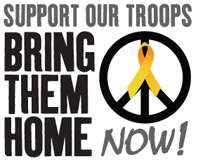A COIN is a COIN is a COIN
 "Not much"
"Not much"--Colonel Gian P. Gentile,
on what the U.S. has gained
after two wars in a decade
Mr. Jinx and Miss Lucy,
they jumped in the lake
I'm not that eager
to make a mistake
--Things Have Changed,
Bob Dylan
_________________
We would like to compare Counterinsurgency policy (COIN) to the conclusions drawn by the Nova program, "The Great Inca Rebellion". It explores Pizarro's experience with the Incas which also parallels Cortez's experience with the Aztecs, in that both are very similar to the military policy we now call COIN.
COIN did not start with FM 3-24, nor in Vietnam. The Spaniards used COIN practices to destroy both the Inca and the Aztec empires. (The same can be said for the U.S. Army and its destruction of the U.S. Indian tribes.)
The short version of Pizarro and Cortez is that they organized native armies to act as cannon fodder (lance fodder?) in their campaigns. The white European invaders used native allies to overpower their enemies. This template was used in future colonial efforts, and is still the formula of the U.S. Special Operations Command (SOCOM) in our current COIN operations. So after 467 years of solid history, how can anyone say that everything has changed?
Since the World Trade Center attacks we've been sold a bill of goods by the military industrial complex, with the full concurrence of the political apparatus: Everything changed, and Counterinsurgency (COIN) was the solution. However, some people are noticing that COIN has not been the spectacular solution it was touted to be; whatever appears to be won on the front end, is lost on the back.
Now, West Point is considering COIN may be dead in the water (West Point is Divided on a War Doctrine's Fate.) Even West Point catches up to Ranger. Asymmetrical warfare was the newest thing since sliced bread, and 3rd and 4th generation warfare theorists were a hot commodity. We are told all of the old rules are passe, and we swallow the new, whole.
Ranger has always called these theories garbage, but that is too kind as even garbage serves a purpose. These theories are obstructive and promote reactionary operational imperatives posing as newfangled thinking. In fact, the principles defining warfare -- the Rules of War, International Law, the Geneva Conventions, the Principles of War and the Hague Conventions -- have not changed; we are not Capt. Picard, and saying they have does not make it so.
Nothing has changed since at least the middle 16th century. The idea could also be applied to Alexander, Hannibal and various armies throughout history.
Labels: COIN, COIN is a losing strategy, counterinsurgency, ranger revisionism











2 Comments:
Well, I think what "changed" was the notion that the old labor-intensive war as passe'; that a mechanized U.S. Army would fight robo-wars with a techno-heavy USAF overhead - remember '91 and how that "proved" that no nation would be foolish enough to challenge the U.S. or a U.S.-backed proxy militarily?
The techno-war model had no real answer for grunt-level jamokes sneaking around with homemade bombs, though. (And it's not like we hadn't been here before - anybody else remember the "Macnamara Line" that was gonna stop the VC in South Vietnam?) So...let's return to the old formulas of rebellion suppression we've tried since the end of WW2, and that everyone else has used since Roman times.
But the difference is that they work if you're a Roman, or a Spanish conquistador and are willing to apply them ruthlessly. Between them Cortes, Pizarro, and their successors managed to exterminate something like 70-80% of the pre-Conquest native population of the Americas. If the U.S. had been willing to do that in Iraq and A-stan, I have no doubt that those sad lands would now be "pacified" and under the boot of some UL-approved local satrap.
I talked about the conditions under which interventions in foreign civil wars can work for Great Powers; almost none of those conditions were present in Afghanistan or post-Saddam Iraq, and so far as I can tell are similarly lacking in Libya, Somalia, and (possibly) Yemen where the U.S. has intervened recently.
So IMO it's not that these "theories" aren't valuable, or can't work. It's just that "counterinsurgency" is either a hothouse plant - if run the "American way" - and requires a fairly restrictive set of conditions to work (see: El Salvador) or is a brutal, savage war of extermination (see: Chechnya) which is damn deadly difficult to "sell" to a bunch of idiot Americans who think of war as something they watch on the Military Channel...
Say it ain't so Chief, say it ain't so.
"Spot on" as they say.
D
Post a Comment
<< Home